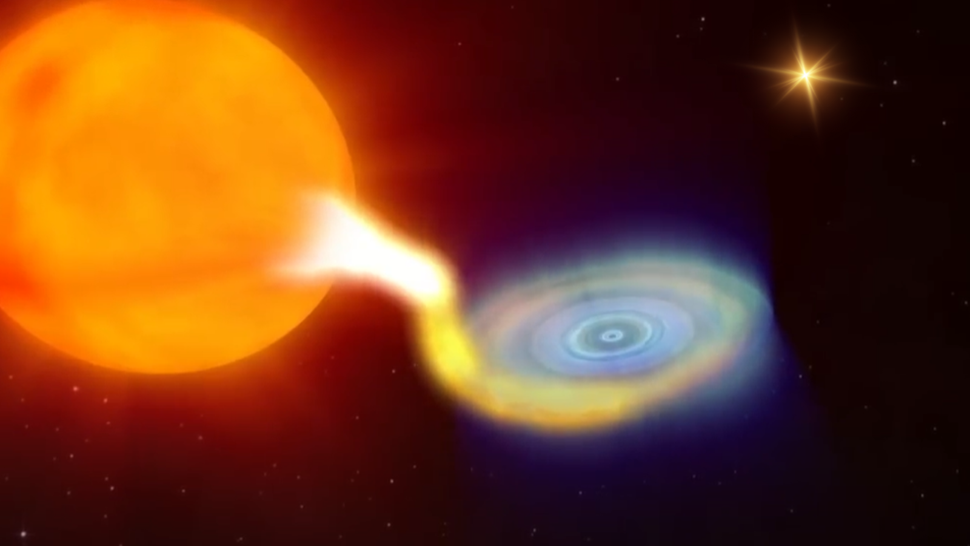1st triple black hole system discovered in 'happy accident'
By Robert Lea published 17 hours ago
"Overall, it's not surprising that black holes should be in triples, but what's surprising is that this system held onto the outer star after forming the black hole."

A squashed orange sphere linked by a fine trail to an large orange swirl with a black center with a distant orange star in the background
An illustration shows the black hole of V404 Cygni feeding from a stellar victim as a more cautious star in the system keeps its distance (Image credit: NASA)
Astronomers have discovered the first "black hole triple" system, consisting of a black hole hungrily feeding on a companion star while being orbited by a more distant, cautious star.
Black holes form during the violent death of massive stars in supernova explosions, but this surprising discovery could indicate a more gentle black hole birthing process called "direct collapse." That is because if the origin of this black hole had been more violent, it would have supplied a "pre-natal kick" that would have launched the loosely bound distant star out of this triple star system.
The system in question is V404 Cygni, located within the Milky Way and around 8,000 light-years from Earth. This so-called "X-ray binary" of the black hole and its victim star were previously known, and the system has been well-studied. However, a deeper investigation performed by a team led by Kevin Burdge from the Massachusetts Institute of Technology (MIT) revealed that this binary actually sits at the heart of a triple star system.
Scientists think most black holes form from violent explosions of stars, but this discovery helps call that into question.
"This system is super exciting for black hole evolution, and it also raises questions of whether there are more triples out there," Burdge told Space.com via email. "The fact that this star is still bound is surprising because it implies it received a low-energy natal kick.
. . .

More:
https://www.space.com/first-triple-black-hole-system-gentle-formation

